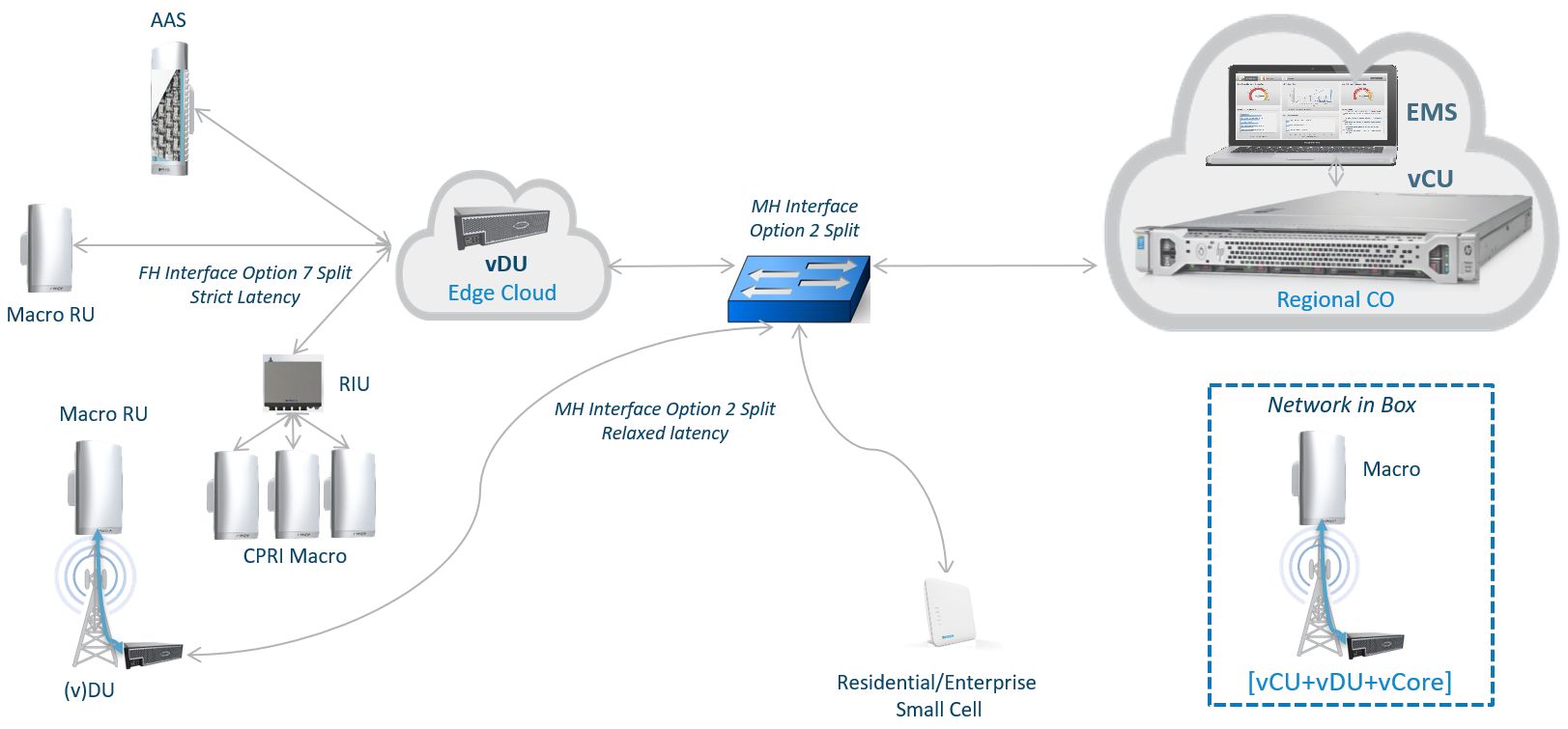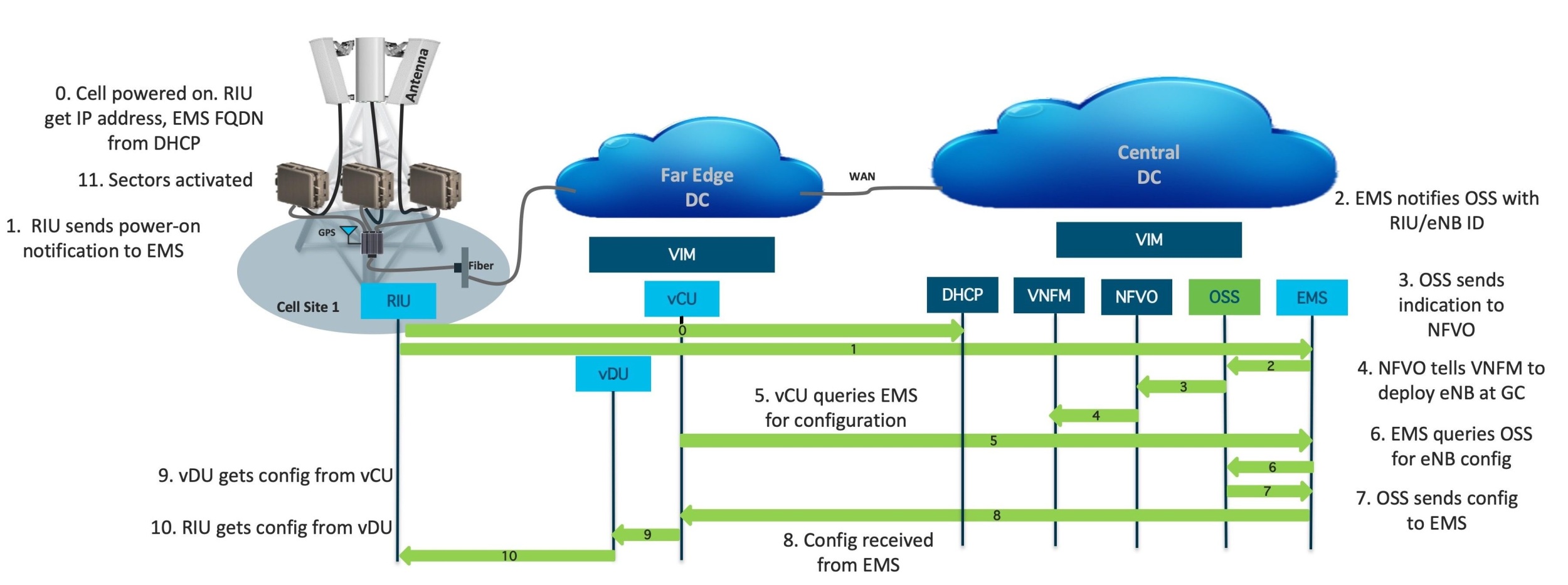Small cells and macro cells differ in capabilities. Virtual radio access networks can compensate for those differences, bringing interoperability to the table.
Numerous studies suggest that the bulk of Internet data consumption — up to 80% — takes place indoors. While Wi-Fi serves this demand for laptops, mobile devices in the workplace increasingly make indoor cell coverage important. Networks must adapt to this change, particularly as people head back to their offices.
Mobile network operators face the challenge of using small cell base stations including micro cells, metro cells, small cells, and distributed antenna systems (DASs) that offer connectivity but have historically not been highly interoperable with the radio access network (RAN) of the cellular macro cell-based network. Open virtualized Radio Access Network (Open vRAN) software addresses this issue by separating the non-real-time functions from real-time functions. Standardized by the O-RAN Alliance, Open vRAN software lets networks adapt to changing traffic conditions.
Small cell issues
The small cell market consists mostly of a few giant equipment makers, though many niche players provide home eNodeB (HeNB) gateways that use system-on-chip (SoC) processors to provide connectivity.
Some of these systems typically lack all of a macro cell’s features, resulting the following issues:
- Many systems don’t support full mobility, supporting only hand-in traffic, but not hand-out traffic.
- A limited set of key performance indicators (KPIs) and user equipment (UE) traces, which hinders the ability to manage and troubleshoot cell- and subscriber-level performance.
- The HeNB software is different from the RAN software running in the macro cell, which adds more operational cost and introduces inconsistencies in the network.
- These small cells feature limited coordination across multiple sites for radio access functions such as radio resource management (RRM), self-organizing network (SON), X2/S1, and security. This adds cost and complexity due to network silos created between different small cells.
Open vRAN for small cells
Open vRAN provides a RAN for small cells, providing macro cell interoperability that can scale to the more limited processing capability of a small cell. Open vRANs are configured with a higher layer split RAN architecture that is as shown in Figure 1.
Figure 1. Small cells within Open vRAN architecture can use Hyper converged Open vRAN platforms, which lets macro cells or small cells use the same software.
In the network shown in Fig. 1, an Open vRAN virtual central unit (vCU) manages higher layers in an operator’s point of presence (PoP), whereas lower layers reside at the small cell. Thus, the small cell acts as a combined distributed unit (DU) or a remote radio unit (RRU). This split removes most of the computational requirements from the small cell, making it possible to integrate the small cell with the rest of the operator’s network.
Some of the advantages of the Open vRAN small cell include:
- Elimination of HeNB gateway. Instead of using an HeNB gateway, the network’s vCU establishes an S1 connection (Figure 2) between small cells and evolved packet core (EPC). Thus, the small cell has a better tie to the macro network, which reduces complexity and cost.
- Transport security. The Open vRAN architecture is suitable for small cell deployment over any unsecured public broadband network because the interface between the virtual baseband unit (vBBU) and the small cell is secured using internet protocol security (IPSec) encryption.
- Management framework for improved operational efficiencies.
- One of the benefits of software-based Open vRANs is a high degree of management automation (Figure 3) than enables carrier-class monitoring for small cells.
- Open RANs can trace UE similar to macro cells for end-to-end troubleshooting irrespective of whether a UE was in macro-cell or small-cell coverage.
- Single pane of glass management for performance or operation across macro cells and small cells.
- Unified L3 features with macro-cell layer. Potentially better handover performance because the vCU for the small cells exposes the X2/S1 interfaces akin to those used by macro cells, leading to full mobility feature availability on small cells.
Figure 3. Zero-touch, end-to-end auto-provisioning of cell site — automatic instantiation, configuration of virtual network functions (VNFs).
Open vRANs provide flexibility in realizing different deployment architectures and reduce the overall total cost of ownership (TCO) for small cell deployments. This higher-layer split architecture supports the requirements by many operators to enable a unified software to better support coordination between clusters of cells and allow for common element management capabilities across different small cells.
 Anil Bhandari is Vice President of Product Management at Altiostar. He has over 20 years of experience in telecommunications, both from telecom operator and infrastructure companies including Cisco and Motorola.
Anil Bhandari is Vice President of Product Management at Altiostar. He has over 20 years of experience in telecommunications, both from telecom operator and infrastructure companies including Cisco and Motorola.




